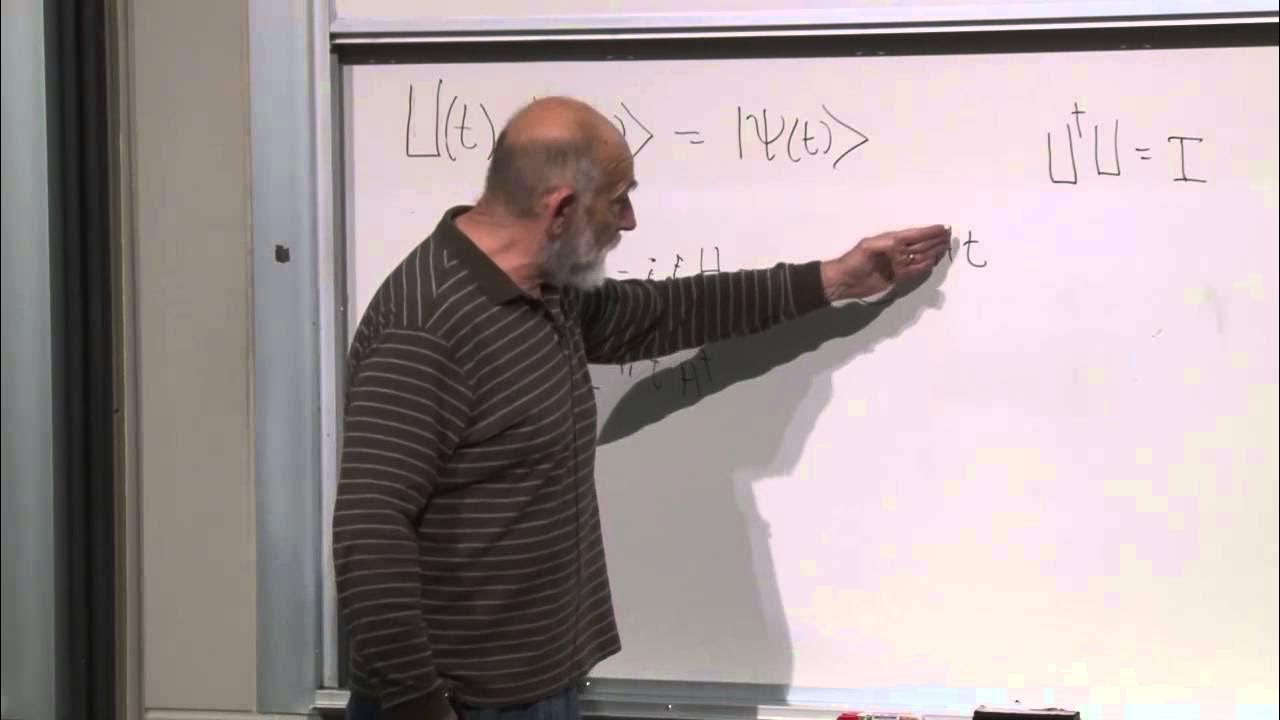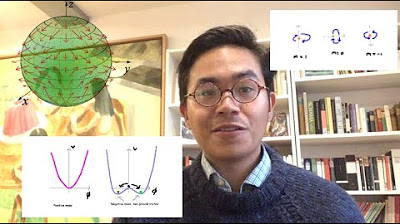Why study Lie theory? | Lie groups, algebras, brackets #1
TLDRThis video script introduces the concept of continuous symmetries as explored by Norwegian mathematician Sophus Lie, who sought to solve differential equations through symmetry, inspired by Galois's work on polynomial equations. Unlike Galois's discrete symmetries, Lie's continuous symmetries deal with an infinite set of solutions. Although his theory didn't dominate differential equations, it has found applications in physics and quantum systems. The script outlines a planned video series on Lie theory, covering prerequisites, Lie algebras, and quantum spin, aiming to make the complex subject accessible and engaging.
Takeaways
- 🔍 Sophus Lie, a Norwegian mathematician, aimed to solve differential equations using a unified theory based on symmetries.
- 🌟 Lie was inspired by Galois, who used symmetries to solve polynomial equations successfully with his Galois Theory.
- 🔄 Galois Theory focuses on 'discrete' symmetries, which are permutations of the roots of polynomials, finite in number.
- 🔄 Lie sought to apply 'continuous' symmetries to differential equations, where solutions form a continuous family until initial conditions are specified.
- 📚 Lie's analogy between differential and polynomial equations was based on the concept of symmetries, though continuous in nature for differential equations.
- 🚫 Despite Lie's efforts, his theory of continuous symmetries did not become the dominant method for studying differential equations.
- 🌐 However, the study of continuous symmetries found applications in various fields, including physical systems that exhibit symmetries.
- 🌌 The concept of symmetry was applied to quantum systems, leading to the concept of spin 1/2 and the prediction of the omega baryon, later confirmed experimentally.
- 📈 Lie's theory, while not the primary tool for differential equations, has found utility in advanced areas of mathematics and other disciplines.
- 🎥 The speaker plans to create a video series on Lie theory, with the first video discussing the importance of continuous symmetries.
- 📝 The video series will cover prerequisites like group theory, the significance of the exponential map, Lie algebras, Lie brackets, and quantum spin from a mathematical perspective.
Q & A
Who was Sophus Lie and what was his main goal in the field of mathematics?
-Sophus Lie was a Norwegian mathematician who aimed to solve differential equations with a single, unified theory using symmetries.
What inspired Sophus Lie to use symmetries in his approach to differential equations?
-Lie was inspired by the earlier work of mathematician Galois, who used symmetries in his successful Galois theory for studying polynomial equations.
How does the symmetry concept in Galois theory differ from the one in Lie's theory?
-In Galois theory, symmetries are 'discrete', involving permutations of the roots of a polynomial, while in Lie's theory, symmetries are 'continuous', dealing with a continuous family of solutions in differential equations.
Why did Lie's theory of continuous symmetries not become the dominant tool for studying differential equations?
-While the script does not provide a specific reason, it suggests that Lie's theory did not dominate the study of differential equations, although it found usefulness in other areas.
In what ways have continuous symmetries been applied outside of differential equations?
-Continuous symmetries have found applications in physical systems where laws remain unchanged under certain transformations, and in quantum systems, leading to concepts like spin 1/2 and the prediction of particles like the omega baryon.
What is the significance of the exponential map in Lie's theory?
-The exponential map is particularly important in Lie's theory, as it will be the focus of a dedicated video in the series, indicating its central role in understanding the theory.
What is the plan for the video series on Lie theory?
-The plan for the video series includes 8 videos, starting with the importance of continuous symmetries, prerequisites on group theory, an overview of exponential maps, standard videos on Lie algebras and Lie brackets, and two videos on quantum spin from a mathematical perspective.
What mathematical concept does the video suggest is prerequisite knowledge for understanding Lie theory?
-The video suggests that knowledge of group theory, specifically real and complex rotational symmetries, is a prerequisite for understanding Lie theory.
How does the speaker intend to approach the topic of quantum spin in the video series?
-The speaker plans to cover quantum spin from a more mathematical perspective in two of the videos in the series.
What is the speaker's call to action for viewers of the video?
-The speaker encourages viewers to like, subscribe, comment, and share the video to show support and help the channel.
Outlines
🧩 Introduction to Sophus Lie and Continuous Symmetries
The video script introduces Sophus Lie, a Norwegian mathematician who sought to solve differential equations through a unified theory of symmetries. Inspired by Galois' success with polynomial equations using discrete symmetries, Lie aimed to extend this concept to continuous symmetries relevant to differential equations. The script explains the difference between discrete and continuous symmetries, using the analogy of a continuous family of solutions for differential equations. Despite Lie's theory not becoming the dominant method for solving differential equations, it found utility in various other areas, including physical systems and quantum mechanics, with applications such as predicting the existence of the omega baryon. The script concludes with an overview of an upcoming video series on Lie theory, which will cover the importance of continuous symmetries, prerequisites on group theory, the significance of the exponential map, Lie algebras and Lie brackets, and quantum spin from a mathematical perspective.
Mindmap
Keywords
💡Sophus Lie
💡Differential Equations
💡Symmetries
💡Galois Theory
💡Discrete Symmetries
💡Continuous Symmetries
💡Initial Conditions
💡Physical Systems
💡Quantum Systems
💡Omega Baryon
💡Lie Theory
💡Group Theory
💡Exponential Map
💡Lie Algebras
💡Quantum Spin
Highlights
Sophus Lie, a Norwegian mathematician, aimed to solve differential equations using a unified theory of symmetries.
Lie was inspired by Galois, who used symmetries to successfully study polynomial equations.
Galois theory involved 'discrete' symmetries through permutations of polynomial roots.
Lie sought to apply 'continuous' symmetries to differential equations, contrasting with Galois' discrete approach.
Continuous symmetries in differential equations allow for a continuous family of solutions.
Lie's analogy between differential and polynomial equations was based on the concept of symmetries.
Despite its potential, Lie's theory of continuous symmetries did not become the dominant method for differential equations.
The study of continuous symmetries found applications in physical systems exhibiting inherent symmetries.
Symmetry principles in physics imply that physical laws remain unchanged under transformations like rotation.
The application of symmetry to quantum systems led to the concept of spin 1/2.
Study of symmetries predicted the existence of the omega baryon, later confirmed experimentally.
Lie theory, initially for differential equations, found utility in various advanced mathematical areas.
An 8-video series is planned to explore the theory of Lie, starting with the importance of continuous symmetries.
The series will include a prerequisite video on group theory, focusing on real and complex rotational symmetries.
The significance of the exponential map in Lie theory will be discussed in a dedicated video.
Two standard videos will cover Lie algebras and Lie brackets, explaining their utility.
The series will conclude with two videos on quantum spin from a mathematical perspective.
The video creator encourages viewers to like, subscribe, comment, and share for support.
Transcripts
Browse More Related Video
5.0 / 5 (0 votes)
Thanks for rating:





